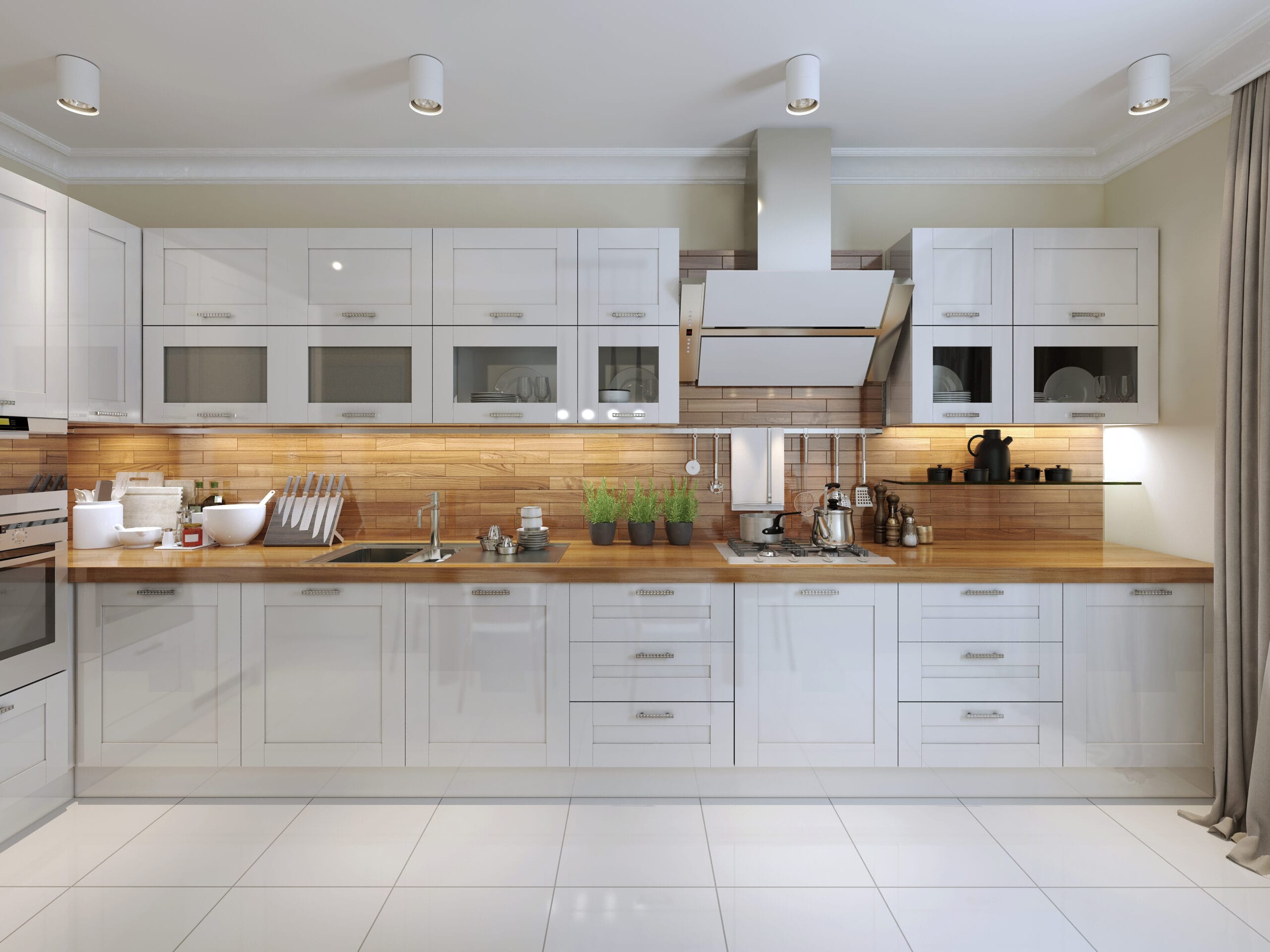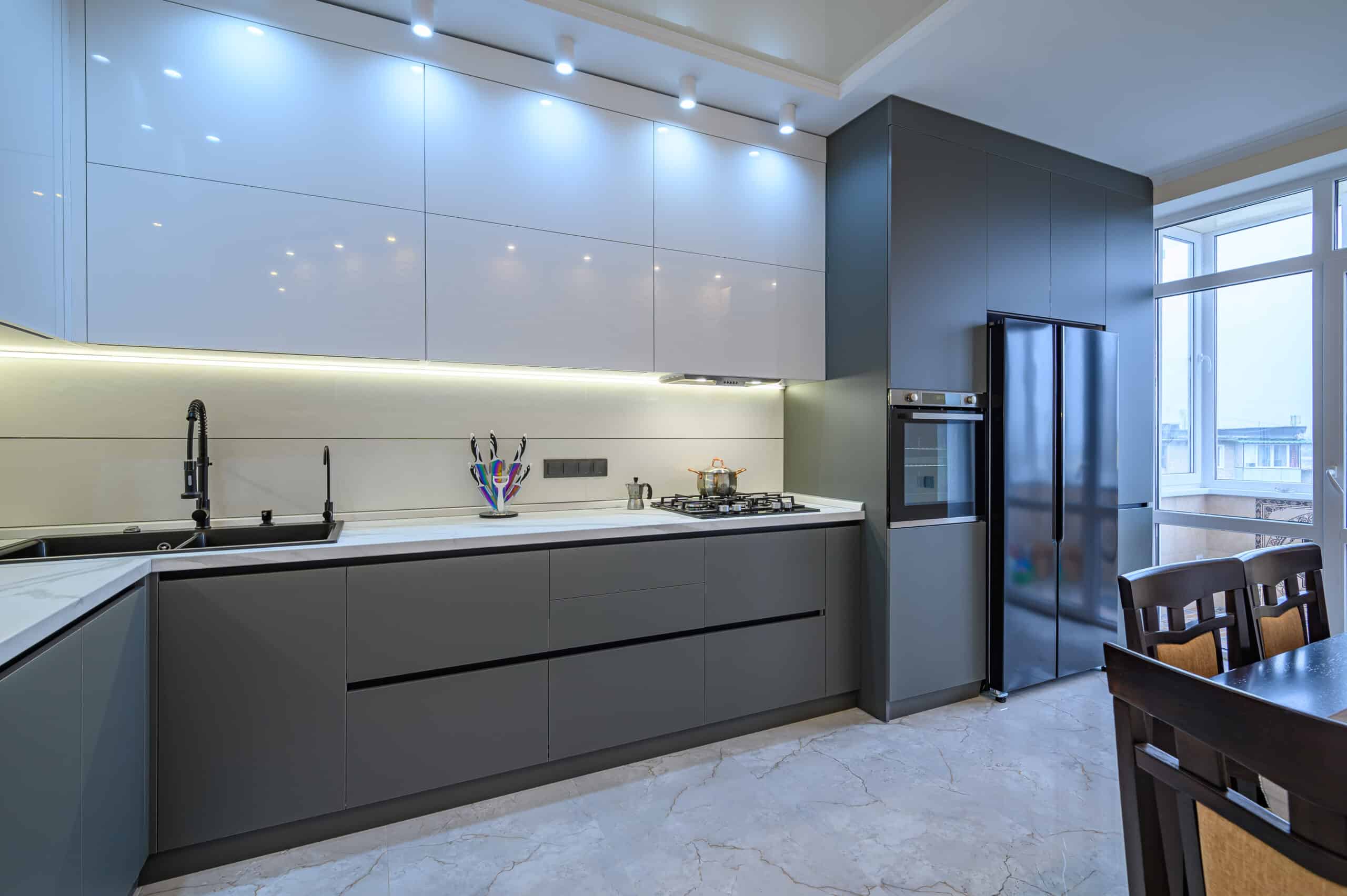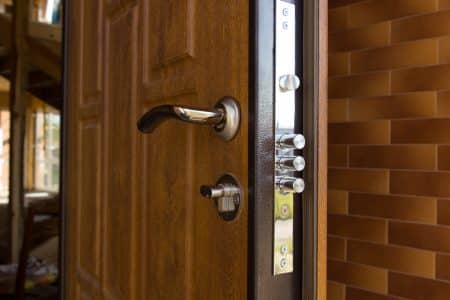Thermofoil cabinet doors are a popular choice in modern kitchen and bathroom design, and they are known for their sleek appearance and versatility. Essentially, these doors are made from a medium-density fiberboard (MDF) core that is wrapped in a vinyl material. This vinyl is heated and then vacuum-formed around the MDF, creating a seamless, durable surface.
The result is a smooth, uniform finish that can mimic the look of wood or other materials without the associated costs or maintenance. I first encountered thermofoil cabinet doors during a home renovation project. I was immediately drawn to their contemporary aesthetic and the variety of finishes available.
Unlike traditional wood cabinets, thermofoil doors do not have visible seams or joints, which gives them a clean and modern look. This seamless design not only enhances the visual appeal but also makes them easier to clean and maintain. As I delved deeper into the world of cabinetry, I discovered that thermofoil doors are not just about looks; they also offer practical benefits that make them a compelling choice for many homeowners.
Key Takeaways
- Thermofoil cabinet doors are made from a vinyl material that is heated and molded onto an MDF or engineered wood core.
- The benefits of thermofoil cabinet doors include their affordability, resistance to moisture and easy maintenance.
- Thermofoil cabinet doors come in a variety of styles and colors, including wood grain and solid colors, to suit different design preferences.
- Maintaining and cleaning thermofoil cabinet doors is easy with regular dusting and occasional mild soap and water cleaning.
- Thermofoil cabinet doors are durable and resistant to warping, chipping, and fading, making them a long-lasting option for kitchen and bathroom cabinets.
The Benefits of Thermofoil Cabinet Doors
Affordability Without Compromise
Thermofoil cabinet doors offer a significant advantage when it comes to affordability. In comparison to solid wood or high-quality plywood options, thermofoil doors are often more budget-friendly, making them an attractive choice for those looking to renovate without breaking the bank. This cost-effectiveness does not come at the expense of style; in fact, many thermofoil options can rival the appearance of more expensive materials.
Moisture Resistance for Durability
Another benefit of thermofoil cabinet doors is their resistance to moisture and humidity. Unlike wood, which can warp or swell when exposed to water, thermofoil doors are impervious to these issues. This characteristic makes them particularly suitable for kitchens and bathrooms, where moisture levels can fluctuate significantly.
Long-Lasting Aesthetics and Functionality
Investing in thermofoil cabinetry means that it will stand up to the challenges of daily use without compromising on aesthetics or functionality. This durability ensures that thermofoil cabinet doors will remain a stylish and functional addition to any room for years to come.
How Thermofoil Cabinet Doors are Made
The manufacturing process of thermofoil cabinet doors is quite fascinating and involves several steps to ensure quality and durability. Initially, the MDF core is cut to size and shaped according to the desired design. Once the core is prepared, a layer of vinyl is selected based on color and texture preferences.
The vinyl is then heated to a specific temperature, making it pliable enough to wrap around the MDF. After heating, the vinyl is carefully applied to the MDF using a vacuum press. This process ensures that the vinyl adheres tightly to the surface, eliminating any air bubbles or imperfections.
Once cooled, the thermofoil door is trimmed and finished, ready for installation. I found it intriguing how this method allows for such a wide range of designs and finishes while maintaining a high level of durability.
The Different Styles and Colors Available
| Style | Color |
|---|---|
| Modern | Black, White, Grey |
| Classic | Brown, Beige, Cream |
| Contemporary | Blue, Green, Red |
| Minimalist | Neutral, Pastel |
One of the most appealing aspects of thermofoil cabinet doors is the extensive variety of styles and colors available. From sleek, high-gloss finishes to textured surfaces that resemble natural wood grains, there is something to suit every taste and design preference. I was amazed at how many options I had when selecting thermofoil doors for my own kitchen renovation.
In addition to color choices, thermofoil doors can be customized in various styles, including traditional raised panel designs or modern flat-panel configurations. This versatility allows homeowners like me to create a cohesive look that complements existing decor or sets the stage for a complete redesign. Whether I wanted a bold statement with vibrant colors or a more subdued palette with neutral tones, thermofoil cabinet doors offered endless possibilities.
Maintaining and Cleaning Thermofoil Cabinet Doors
Maintaining thermofoil cabinet doors is relatively straightforward, which is one of the reasons I appreciate them so much. Unlike wood cabinets that may require special cleaners or treatments, thermofoil surfaces can be cleaned with mild soap and water. I typically use a soft cloth or sponge to wipe down the surfaces, ensuring that I avoid abrasive materials that could scratch the finish.
It’s essential to be mindful of heat sources when caring for thermofoil doors. While they are resistant to moisture, excessive heat can cause damage over time. I learned that placing hot pots or pans directly on the surface should be avoided; instead, using trivets or heat-resistant mats can help preserve the integrity of the finish.
By following these simple maintenance tips, I have been able to keep my thermofoil cabinets looking fresh and new.
The Durability of Thermofoil Cabinet Doors
Withstanding the Test of Time
Durability is a crucial factor when choosing cabinetry, and thermofoil cabinet doors excel in this area. The vinyl surface is designed to withstand daily wear and tear, making it resistant to scratches, dents, and stains. This resilience is particularly beneficial in high-traffic areas, such as the kitchen, where cabinets are frequently exposed to various forms of damage.
Resisting the Effects of Family Life
In my personal experience, thermofoil cabinets have held up remarkably well against the rigors of family life. From spills during meal prep to the occasional bump from kitchen gadgets, these cabinets have consistently demonstrated their ability to withstand the demands of daily use. This level of durability provides peace of mind, knowing that my cabinets can handle the inevitable accidents and mishaps that occur in a busy household.
Long-Lasting Color and Finish
Moreover, thermofoil doors are less prone to fading compared to painted surfaces or natural wood finishes. This resistance to discoloration means that my cabinets maintain their vibrant appearance over time, even in areas exposed to sunlight. The long-lasting color and finish of thermofoil cabinetry were significant factors in my decision-making process, as I wanted to invest in a product that would retain its aesthetic appeal for years to come.
Comparing Thermofoil Cabinet Doors to Other Materials
When considering cabinetry options, it’s essential to compare thermofoil doors with other materials like solid wood, laminate, and plywood. Solid wood cabinets are often regarded as the gold standard due to their natural beauty and longevity; however, they come with a higher price tag and require more maintenance. In contrast, thermofoil offers a similar aesthetic at a fraction of the cost while being easier to care for.
Laminate cabinets are another alternative; they provide a durable surface but may lack the depth and richness of thermofoil finishes. While laminate can be more affordable than wood, it often does not offer the same level of customization or variety in design as thermofoil does. In my experience, thermofoil strikes an excellent balance between affordability, style, and durability, making it an appealing choice for many homeowners.
Tips for Installing Thermofoil Cabinet Doors
If you’re considering installing thermofoil cabinet doors in your home, there are several tips I found helpful during my own installation process. First and foremost, it’s crucial to measure your cabinet openings accurately before ordering your doors. Taking precise measurements ensures a proper fit and minimizes any potential issues during installation.
Another tip is to use quality hardware when attaching your thermofoil doors. Investing in sturdy hinges and handles will enhance both functionality and aesthetics. I also recommend pre-drilling holes for screws to prevent any damage to the MDF core during installation.
Finally, enlisting a friend or family member to help can make the process smoother and more enjoyable. In conclusion, thermofoil cabinet doors offer an attractive combination of style, durability, and affordability that appeals to many homeowners like myself. With their seamless design and extensive customization options, they can elevate any space while standing up to daily use.
Whether you’re renovating your kitchen or bathroom or simply looking for an upgrade, considering thermofoil cabinetry could be one of the best decisions you can make for your home.
FAQs
What are thermofoil cabinet doors?
Thermofoil cabinet doors are made from a durable vinyl material that is heated and molded over medium-density fiberboard (MDF) or engineered wood. This creates a seamless and smooth surface that is resistant to moisture and easy to clean.
What are the benefits of thermofoil cabinet doors?
Thermofoil cabinet doors are known for their resistance to moisture, making them ideal for use in kitchens and bathrooms. They are also easy to clean and maintain, and come in a wide variety of colors and styles.
How are thermofoil cabinet doors different from other types of cabinet doors?
Thermofoil cabinet doors are different from other types of cabinet doors, such as wood or laminate, in that they are made from a vinyl material that is heated and molded over MDF or engineered wood. This gives them a seamless and smooth surface that is resistant to moisture.
Are thermofoil cabinet doors durable?
Thermofoil cabinet doors are known for their durability and resistance to moisture. However, they can be prone to peeling or delamination if exposed to excessive heat or if the adhesive used to bond the vinyl to the MDF or engineered wood fails.
Can thermofoil cabinet doors be repaired?
Thermofoil cabinet doors can be repaired if they become damaged or start to peel. However, the repair process can be complex and may require the expertise of a professional. It is important to follow the manufacturer’s guidelines for repairing thermofoil cabinet doors to ensure the best results.







